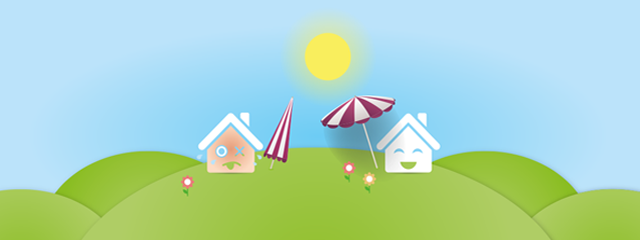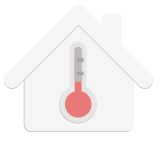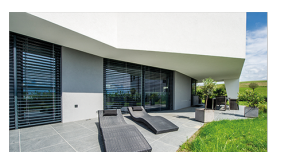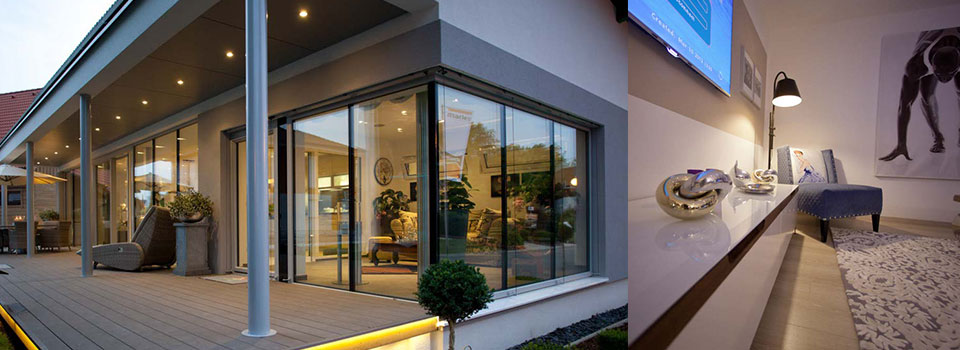
Are Our Homes Becoming Dangerously Hot? We Look At 6 Smart Ways To Keep Your Home Cool
It seems the recent heatwave has caused some of our brains to melt as well as our ice creams, as earlier this month, the good old Daily Mail released an article with even more hysterical flair than usual:
 “Crazy eco rules that are turning modern homes into ovens: Experts warn drive for ‘green’ homes poses a potentially lethal risk.”
“Crazy eco rules that are turning modern homes into ovens: Experts warn drive for ‘green’ homes poses a potentially lethal risk.”
Well, we just couldn’t let this one lie. It’s no secret us Brits are obsessed with the weather. Where else will you be told to “listen to that wind” or “just look at that rain”? We’re nothing if not dramatic.
Now that the sun is out, it’s time for weather drama of a different kind. Apparently, our new build homes are just too cosy – so overstuffed with insulation, they’re actually cooking us. They’re a health hazard. They’re dangerous, just like the new ‘smart’ technology in them. Frightful.
In case you hadn’t picked up on the sarcasm there, we think that’s a load of rubbish.
The article reports that the new residential development in question has been built to Passivhaus standards. For those not familiar with Passivhaus, let’s take a quick look at what building to ‘Passive House’ standards actually involves.
As you might expect, Passivhaus is a German concept. Passive Homes are meticulously designed with a focus on providing a high level of comfort whilst using as little energy as possible for heating and cooling the home. Although voluntary, the standards of construction required for a Passivhaus are extremely rigorous.
It’s funny how we don’t hear of the Passivhauses in Germany, Austria or in fact anywhere else having trouble with overheating…
So what’s causing the problem? Is it all in our minds? Is it a case of bad design? Are we Brits trying to cut corners?
We’ve got a few theories:
 On the continent, it’s very common for buildings to have exterior roller shutters. Whilst they are great for keeping intruders out of your house, their primary function is to keep heat out.
On the continent, it’s very common for buildings to have exterior roller shutters. Whilst they are great for keeping intruders out of your house, their primary function is to keep heat out.
With more of us opting for glass walls, large sliding glass doors and full height glass windows, managing the temperature throughout your home needs to be properly considered not just in terms of heating, but also how to cool your home during hot weather.
Whilst a house made of glass might be nice for your prize-winning tomatoes, if you haven’t considered proper cooling and ventilation options, you may find you’re going to suffer come summer.
Six ways to keep your home cool:
There’s quite a few ways you can help keep your home cool in the summer. Some require a little more effort than others, such as painting your roof white or growing vines all over your home, but here are a few you may like to consider:
1.) Close the blinds
 Even if you don’t have roller shutters, there are still ways to keep the sun out of your home. Keep blinds and curtains closed during the day. Blackout blinds and curtains are especially effective at keeping out light and heat.
Even if you don’t have roller shutters, there are still ways to keep the sun out of your home. Keep blinds and curtains closed during the day. Blackout blinds and curtains are especially effective at keeping out light and heat.
Similar to roller shutters, awnings aren’t too common in the UK. However, if you have one or are thinking of getting one, it may interest you to know that window awnings can reduce solar heat gain in the summer by up to 65% on south-facing windows and 77% on west-facing windows.
If you have motorised blinds or curtains, the Miniserver can control these automatically depending on the weather forecast, time of day and even the sun’s position in the sky.
2.) Turn off lights and appliances
 Even if you have LED lights which are known for their low heat dissipation, if it’s nice and sunny outside, consider keeping the lights off. In the same vein, many appliances around your home produce heat whilst in use or on standby. Switch them off if you can.
Even if you have LED lights which are known for their low heat dissipation, if it’s nice and sunny outside, consider keeping the lights off. In the same vein, many appliances around your home produce heat whilst in use or on standby. Switch them off if you can.
3.) Open windows strategically
 Now this one may seem a little counter-productive – surely you want to fling every window open to let a cool breeze blast through the house? Not so fast. Whilst it may seem like temporary relief, if it’s really hot outside, all you’re doing is letting the hot air into the house.
Now this one may seem a little counter-productive – surely you want to fling every window open to let a cool breeze blast through the house? Not so fast. Whilst it may seem like temporary relief, if it’s really hot outside, all you’re doing is letting the hot air into the house.
Instead, think strategically. Now we all know that hot air rises, so the way to create a natural draft is to open the downstairs windows on the shady side of the house, and upstairs windows on the hot side of the house. You may need to experiment with how wide you open the windows to get the best effect.
If there’s already a breeze outside, use it to your advantage to cool your home. Open downstairs windows on the side of the house the wind is hitting, and upstairs windows on the side of the house away from the wind. As the wind passes over and around your house, the air pressure on the far side will decrease, causing hot air to be pulled out of your home. Clever, eh?
4.) Use water to keep cool
 The ventilation system in the Loxone Basecamp makes use of a groundwater source that was found by accident by during the excavation work for the building foundations. This water, with a constant temperature of 8°C, is used to cool the air throughout the office.
The ventilation system in the Loxone Basecamp makes use of a groundwater source that was found by accident by during the excavation work for the building foundations. This water, with a constant temperature of 8°C, is used to cool the air throughout the office.
5.) Install temperature sensors
 By installing temperature sensors in every room of your home, you can start taking control of heating and cooling rooms individually.
By installing temperature sensors in every room of your home, you can start taking control of heating and cooling rooms individually.
There’s no need to pull wires for your temperature sensors either. The Smart Socket Air is a wireless plug with an in-built temperature sensor (as well as a power meter). Simply plug it into any socket, learn it in and it will start recording the room temperature for you.
6.) Set up an Overheat Protection Mode
![]() Once you’ve got your temperature sensors installed, you can set up an ‘Overheat Protection Mode’ in Loxone Config. If you’re not sure how to do this yourself, contact your Loxone Partner.
Once you’ve got your temperature sensors installed, you can set up an ‘Overheat Protection Mode’ in Loxone Config. If you’re not sure how to do this yourself, contact your Loxone Partner.
If the temperature reaches ‘overheat’ level, your overheat protection mode will kick into gear, automatically closing any motorised blinds or curtains and running your ventilation system.
If, for example, the system has been installed in an elderly relative’s home, you’ll receive an instant phone call to alert you to the high temperature and can quickly ask a neighbour to check on them. This also works well if you have a pet that stays shut in at home whilst you’re out during the day.
Want to find out more about intelligent heating and cooling, or smart blind control in your home? Request a free brochure today and discover the benefits that await you in a Loxone Smart Home.

